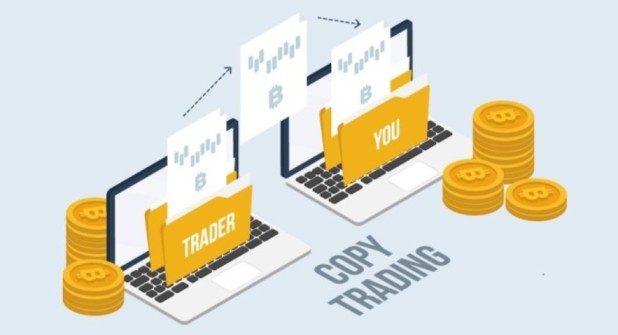
Buying/Selling Cryptocurrency
When you buy or sell cryptocurrency, you either acquire digital assets as an investment or use them for transactions. Buying means getting cryptocurrency to keep in a wallet or use for payments. Selling involves exchanging your digital assets for regular money or other cryptocurrencies. People usually do this on cryptocurrency exchanges where they can place orders at specific prices. You may choose your best platform to purchase and exchange cryptocurrency.
Trading Cryptocurrency
Trading cryptocurrency means actively participating in the market to profit from price changes. Traders buy and sell cryptocurrencies to take advantage of short-term price fluctuations. They use different strategies like analyzing charts, market trends, or news events. Traders often use tools and indicators to make intelligent decisions. The goal is to buy when the price is low and sell when it’s high, all within a short period.
In principle, trading on the cryptocurrency market is similar to working with CFDs, stocks, or currency pairs. The main difference is that cryptocurrencies are used as trading instruments.
The essence of crypto trading is that we first need to buy and then sell digital currencies at a higher price. A crypto trader is doing the same thing as his counterparts in the currency or stock market.
Crypto markets are often explored using the same technical analysis methods as fiat currency markets. Many traders prefer to trade bitcoins based on trading volume and indicators, often using adapted classic trading strategies.
But regarding fundamental analysis, the cryptocurrency market can offer many surprises. Digital assets can change dramatically in price due to various events: deviation from the development plan of the project, forks, increase or decrease in trading fees of the exchange, a sharp change in the popularity of the coin among miners, etc.
At the same time, the quotes of cryptocurrencies strongly depend on the dynamics of the price of bitcoin. This digital asset occupies a large part of the market, about 50% of transactions are conducted using bitcoins. Therefore, BTC is the primary market that sets the trend for the whole industry.
Top Strategies of crypto trading
Here are some primary strategies people use to trade cryptocurrencies:
Day Trading
Day traders make trades within a day and wait to hold onto their coins overnight. They watch the market closely and take advantage of daily price changes. Their trades can last from minutes to hours.
Scalping
Scalpers buy and sell coins quickly, taking advantage of small price movements. They make many trades daily, aiming to make a small profit from each trade, which can add up over time. Their trades can be very short, sometimes just a few minutes or seconds.
Momentum Trading
Momentum traders make trades based on recent price trends. They join a trend when the price goes up or down, buying low and selling once the momentum starts to fade. They hope to profit from the overall trend of the coin. These trades can last from an hour to several weeks.
Swing Trading
Swing traders focus on the short-term price swings of a coin. They use technical analysis to predict when a coin’s price will move significantly in a specific direction within a day or a few weeks. Their trades are usually a bit longer than momentum trades.
Each strategy requires different skills and knowledge, and choosing the one that suits your trading style and goals is essential.
Investing in crypto
Investing involves buying and trading. Investing in cryptocurrencies means buying and holding digital assets to make money. The idea is to buy them and wait for their value to increase, so you can sell them later at a higher price and make a profit.
Investing in cryptocurrency refers to allocating funds to digital assets to generate a financial return. It involves buying and holding cryptocurrencies as an investment strategy rather than solely using them for transactions. Investing in crypto can be seen as a way to participate in the growing digital economy and potentially benefit from the appreciation in value of these digital assets.
Investing in crypto involves several vital elements. First, it requires selecting suitable cryptocurrencies to invest in. This decision is typically based on factors such as the project’s technology, team, real-world use cases, market demand, and overall potential for growth. Thorough research and analysis are essential in identifying promising cryptocurrencies with long-term potential.
Once the cryptocurrencies are chosen, investors need to determine the investment strategy. Some investors opt for a long-term approach, buying and holding cryptocurrencies for an extended period, believing their value will increase. Others may engage in active trading, using short-term price fluctuations to profit by buying low and selling high.
Investing in crypto also involves managing the associated risks. The cryptocurrency market is known for its volatility. Prices can experience significant fluctuations within short periods. Investors must be prepared for potential price swings and have risk management strategies to protect their investments.
Additionally, investing in crypto requires choosing the right platforms or exchanges to securely facilitate the purchase and storage of digital assets. It is crucial to select reputable and reliable platforms that offer robust security measures to safeguard investments.
Overall, investing in crypto combines elements of financial analysis, risk management, and technological understanding. It can be an exciting and potentially rewarding venture, but it also requires careful consideration, research, and a long-term perspective to successfully navigate the dynamic and evolving cryptocurrency market.
To sum it up, buying and selling cryptocurrency is about acquiring or getting rid of digital assets for investing or using them for transactions. On the other hand, trading cryptocurrency is actively participating in the market to profit from short-term price changes. While both involve exchanging cryptocurrencies, trading aims explicitly to take advantage of market fluctuations to generate profits.


